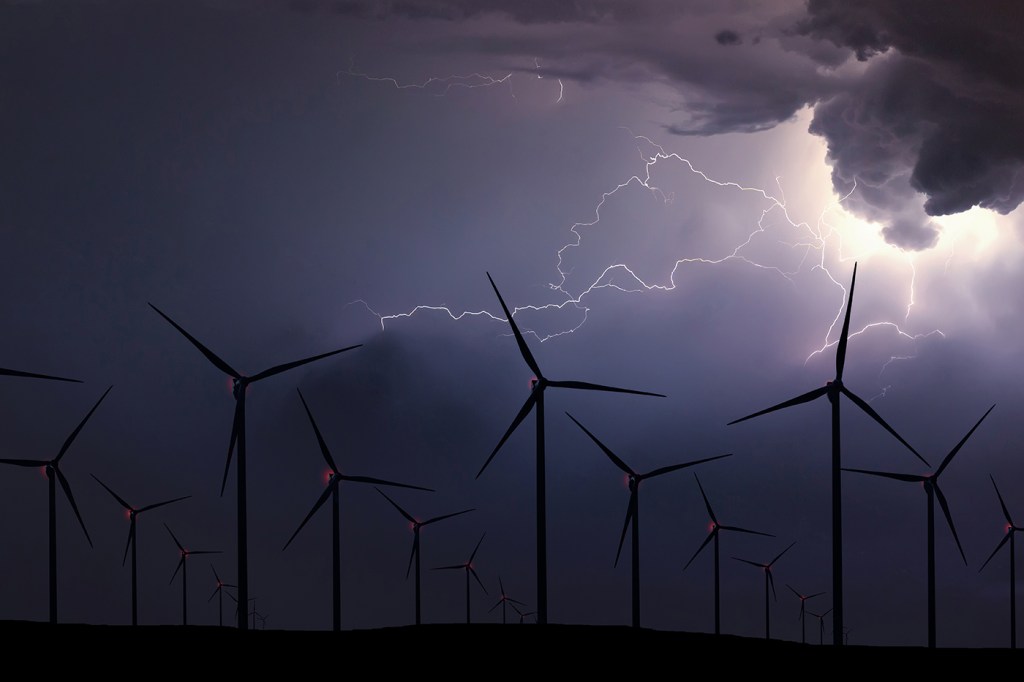‘There is enough wind energy capacity off the east coast to power the entire country’

Massachusetts last week moved forward in building a wind farm off the coast of New Bedford. This project will generate 800 megawatts of electricity—enough to power half a million homes, the New York Times reports—and will be the first major offshore wind farm in the United States.
While countries in Northern Europe have been using wind energy for more than two decades, the United States hasn’t invested much in the technology. But that’s all starting to change.
“This is an industry that is about to explode,” said Northeastern engineering professor Jerome Hajjar. He is part of a multi-university team of researchers outlining a national research infrastructure plan for offshore wind facilities.
There is enough wind energy capacity off the east coast to power the entire country, Hajjar said, and Massachusetts is the first state to invest heavily in taking advantage of this resource. Here, Hajjar, CDM Smith Professor and chair of the Department of Civil and Environmental Engineering, explains where wind energy is headed, and how Northeastern is poised to play a role in making the industry a success.
Why haven’t there been wind farms built in New England until very recently?
There has been a history of one wind farm they tried to develop off the coast of Martha’s Vineyard some years ago. It had support from the Massachusetts Clean Energy Center, and a developer worked quite hard to make it successful. It got pretty close but didn’t come to fruition in the end. There was a lot of controversy associated with the proposed wind farm. Residents nearby were concerned about seeing the turbines, and the financing ultimately did not come through fully.
I think the industry and the United State learned a lot from that process, and that’s why we’re seeing much larger success now. In the years since then, Massachusetts and the federal government have successfully leased three much larger offshore sites much further south, further from Martha’s Vineyard and Nantucket. Since then, additional leases have been put forward up and down the east coast for offshore wind farms. There is great opportunity here for generation of electricity.
What role will Northeastern play in the new wind energy infrastructure?
There are some important differences between the east coast and other areas where wind farms have been built. For starters, we have hurricanes, and by and large, the North Sea does not. Just as with earthquake engineering, researchers have been learning much in the last several decades about safe and resilient building design for hurricanes. We think that’s a major opportunity for researchers at Northeastern to contribute—not only for designing the turbines themselves, but also for the many other issues around offshore wind farms.
We need to understand the environmental issues, financial and policy issues, supply chain, workforce development, and shipping issues. Our hurricanes on the east coast are different, our soil conditions are different, our supply chains are different, our local, state, and federal policies are different. There are numerous areas where taking the international knowledge and mapping that onto these local communities is really important.
How will New England wind farms contribute to the country’s larger energy goals?
The Department of Energy has set a goal of 80 gigawatts by 2050 coming from offshore wind. Massachusetts is one of the leading states, setting a goal of 1.6 gigawatts by 2027. Eighty gigawatts represents about 7 percent of all energy needed in the country, so we’re still not talking about a large percentage, but the capacity is there—eighty gigawatts represents only about 4 percent of the total capacity for wind energy on the east coast.
Several institutions in Massachusetts, including Northeastern, received a grant from the Massachusetts Clean Energy Center to form the Massachusetts Research Partnership. We’re putting out a report this summer identifying the opportunities and the needs to build a research infrastructure for offshore wind, and the capacity to create the workforce to bring this type of energy to the United States.
Our hope is that the federal government and industry will partner with us in the coming years, because we think having a robust research infrastructure is vital to have the offshore wind industry be successful long-term. This is an incredible resource, and I hope the country works together to try to figure out how to harness it safely and effectively.





